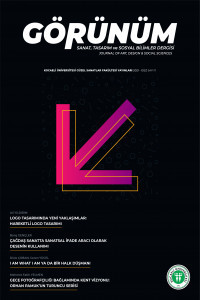Sebald'ın Austerlitz'inde "Akıl" Üzerine
Savaş sonrası Alman edebiyatının en önemli yazarlarından olan W.G. Sebald, Austerlitz adlı romanındaki, romanla aynı adı taşıyan kahramanı, Austerlitz, Avrupa’da rasgele gibi görünen yolculuğunun duraklarında karşılaştığı Anlatıcı ile kurduğu iletişim üzerinden, Nasyonal Sosyalizmin bireyler ve bütün bir kültür üzerindeki yıkıcı etkilerini sergilerken, Avrupa mimarisinde somutlaşan “moderniteyi” sorgular. Roman anlatısını okurla kahramanları arasında hiçbir duygusal yakınlık kurulmasına izin vermeden inşa eder. Aynı şekilde gerilim yaratmaya ve okurun merak duygusunu sömürmeye oldukça müsait bu hikâyede, merak baştan sabote edilir. Roman, böylece okuma edimini yabancılaştırılmış okur için uzak açılı bir “tanıklığa” dönüştürür; anlatı boyunca bir çöküş yolu olarak işaretlenen akıl, yazarın okurla adil bir iletişim kurmasında aracı olur.
Anahtar Kelimeler:
Sebald, Austerlitz, Edebiyat Eleştirisi, Edebiyat, Uzak Açı
On "Mind" in Sebald's Austerlitz
W.G. Sebald, one of the most important authors of postwar German literature, interrogates “modernity”, which started to become visible in European architecture, in his novel Austerlitz through the interaction that the main character, named the same with the novel as Austerlitz, made with the narrator as they encountered in stations of his coincidental-like journey across Europe, while National Socialism was showing its destructive effects on individuals and the whole culture. The novel constructs its narrative by disallowing to establish any emotional connection between the reader and the characters. Likewise, curiosity is sabotaged from the beginning in this story which is quite suitable to create tension and exploit the reader's sense of curiosity. Thus, the novel transforms the act of reading into a distant 'testimony' for the alienated reader; the mind that was told as a way of collapse throughout the narrative helps the author to establish a fair communication with the reader.
Keywords:
Sebald, Austerlitz, Literary Criticism,
___
- Cross, Richard K. (2014). Sebald's "Austerlitz": Sleepwalking And Wakefulness, Southwest Review, Vol. 99, No. 2 (2014), pp. 167-176 (10 Pages), Published By: Southern Methodist University
- Jaggi, Maya (2001). “Recovered Memories”, The Guardian, https://www.theguardian.com/books/2001/sep/22/artsandhumanities.highereducation, elde edilme tarihi: 01.12.2020
- Jaggi, Maya (2001). “The Last Word”, The Guardian, https://www.theguardian.com/education/2001/dec/21/artsandhumanities.highereducation, erişim tarihi: 01.12.2020
- Pieldner, Judith (2013) The Topography Of Memory In W. G. Sebald’s Austerlitz, Cultures of Memory, Memories of Culture, University of Bucharest Review,Vol. III/2013, no. 1 (new series)
- Ward, Lewis (2012). A Simultaneous Gesture of Proximity and Distance: W.G. Sebald's Empathie Narrative Persona. Journal of Modern Literature, Vol. 36, No. 1 (Fall 2012), pp. 1-16 (16 pages), Published By: Indiana University Press
- Sebald, W.G. (2008) Austerlitz, Çev: Gülfer Tunalı, Can Yayınları, İstanbul.
- ISSN: 2458-8970
- Başlangıç: 2015
- Yayıncı: Kocaeli Üniversitesi
